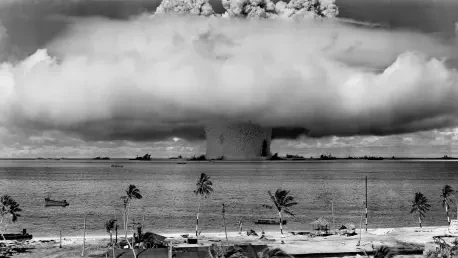The ongoing turmoil at the Zaporizhzhia Nuclear Power Plant in Ukraine has reached a critical juncture, with the facility enduring its longest blackout ever, lasting four consecutive days as reported recently. Situated in Russian-occupied territory near the volatile front line of the conflict, this plant—Europe’s largest of its kind—has become a focal point of concern since its seizure by Russian forces over two years ago. The latest power outage has intensified fears of a catastrophic nuclear incident, as the plant relies on backup diesel generators to maintain essential safety systems. Both Ukrainian and Russian officials have pointed fingers at each other for causing the disruption, with Ukraine attributing the crisis to Russian interference, while Russian authorities blame Ukrainian attacks on the power infrastructure. This deadlock in accountability only heightens the urgency of the situation, as the risk of a meltdown looms large over a region already scarred by war. The persistent danger surrounding this nuclear facility underscores the intersection of geopolitical strife and environmental hazard, demanding immediate global attention.
Escalating Risks in a War Zone
The dangers at Zaporizhzhia are compounded by its precarious location in an active combat zone, where frequent shelling and power interruptions have become alarmingly routine. Even though all six reactors, which once provided a significant portion of Ukraine’s electricity, are currently shut down, the plant still requires a constant power supply to operate critical cooling and safety mechanisms. A failure in these systems could precipitate a reactor meltdown, with devastating consequences not only for the immediate area but potentially across borders. Staffing shortages and the stress of operating under conflict conditions further exacerbate the situation, leaving the facility vulnerable to human error or oversight. The mutual accusations between Kyiv and Moscow about military actions endangering the site reflect a profound lack of trust, making coordinated efforts to secure the plant nearly impossible. International observers have repeatedly highlighted the need for a demilitarized zone around the facility, yet such proposals remain stalled amid ongoing hostilities, leaving safety protocols hanging by a thread.
Geopolitical Maneuvers and Global Concerns
Beyond the immediate safety threats, the crisis at Zaporizhzhia reveals deeper geopolitical strategies, particularly Russia’s apparent intent to integrate the plant into its energy network. Statements from Moscow-appointed officials suggest plans to redirect the plant’s output to Russian-annexed regions, with integration reportedly nearing completion. Independent voices, such as environmental groups, have raised alarms that the current blackout might be exploited to reconnect the facility to a Russian-controlled grid, possibly even restarting a reactor under Moscow’s oversight. This development could have long-lasting implications for energy security in the region. Meanwhile, international efforts to address the situation have seen figures like Rafael Grossi of the International Atomic Energy Agency engaging with Russian leadership to prioritize safety. The global stakes are evident, as any nuclear mishap would have repercussions far beyond Ukraine. Looking back, the prolonged reliance on emergency measures like diesel generators has proven unsustainable, and the polarized narratives from both sides only deepen the impasse, underscoring the need for innovative diplomatic solutions in the future.









